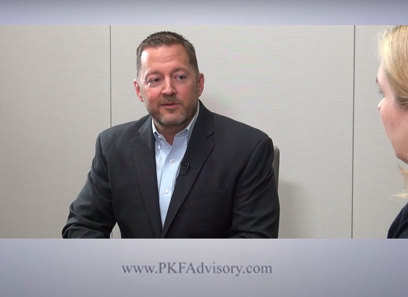In-Depth Guide to Understanding Purchase Price Allocation
Wiki Article
The Important Role of Recognizing Purchase Price Allocation in Mergers and Acquisitions Explained
The process of Purchase Price Allocation (PPA) plays a critical duty in the landscape of mergings and procurements, influencing not only economic reporting however additionally tax approaches and stakeholder understandings. A nuanced understanding of PPA can considerably affect a getting business's economic health, making its precise execution vital for lasting success.Interpretation of Purchase Price Allocation
Purchase price allowance (PPA) is a critical procedure in mergers and purchases that includes dispersing the overall acquisition cost among the different identifiable properties and obligations obtained in a purchase. This allotment is necessary for accurately showing the reasonable worth of the gotten entity's properties and responsibilities on the balance sheet of the obtaining business.The PPA process generally begins with the recognition of all concrete and abstract properties, in addition to any type of liabilities thought during the purchase. Substantial properties may include property, tools, and inventory, while intangible assets often incorporate trademarks, licenses, and a good reputation. Each possession and liability must be measured and valued to make certain that the allowance reflects their reasonable market value at the purchase date.
The resulting allowance influences financial reporting and can affect future earnings through amortization and devaluation of abstract assets. Furthermore, precise PPA is crucial for compliance with accountancy criteria, such as International Financial Reporting Standards (IFRS) and Typically Accepted Accountancy Concepts (GAAP) Consequently, a well-executed PPA process is essential to supplying stakeholders with a clear economic photo of the transaction's impact.
Importance of Accurate Valuation
Accurate appraisal is critical in the purchase cost allotment process, as it directly influences the financial health and wellness and coverage of the obtaining business. An inaccurate appraisal can result in considerable misstatements in financial statements, affecting stakeholder assumptions and possibly leading to regulative scrutiny. Proper appraisal guarantees that the assets and responsibilities gotten throughout a merger or acquisition are videotaped at reasonable value, which is vital for accurate economic coverage.Furthermore, precise assessment help in determining the goodwill produced from the deal, which is important for future problems screening. Stakeholders, consisting of financiers and analysts, rely on the accuracy of these numbers to examine the company's efficiency and make notified decisions. Imprecise assessments may cause overpaying for a procurement, causing decreased returns and a lack of trust fund from financiers.
Additionally, the combination process relies upon accurate assessments to effectively designate resources and handle the freshly integrated entity. Inevitably, the significance of exact appraisal in acquisition price allowance can not be overstated; it lays the foundation for openness, operational effectiveness, and lasting strategic success within the merged company.
Tax Ramifications of PPA
In mergings and procurements, understanding the tax obligation effects of purchase cost allocation (PPA) is vital for both the getting company and the target entity. PPA identifies exactly how the complete acquisition price is distributed among different possessions and responsibilities, which significantly impacts the tax responsibilities of both events entailed.The allocation directly affects the tax deductibility of intangible and concrete properties. For example, assigning a higher part of the purchase cost to depreciable or amortizable possessions can produce considerable tax obligation advantages, enabling the obtaining business to recuperate expenses gradually with devaluation or amortization reductions. Conversely, allocating also much to a good reputation, which is not amortizable for tax obligation functions, may lead to greater taxed earnings in the future.
Misallocation or misconception of these assets can result in unanticipated tax obligations, audits, or fines. Carrying out a thorough evaluation of tax obligation implications throughout the PPA procedure is crucial to maximize financial results and make certain compliance with appropriate tax obligation regulations.
Compliance With Financial Specifications

Entities associated with M&An activities should meticulously evaluate the reasonable worth of identifiable intangible properties, concrete assets, and obligations connected with the acquired entity. This analysis needs to be grounded in robust techniques, such as market, earnings, or cost approaches, making certain that the allowances reflect the financial truth of the transaction.

Best Practices for PPA Implementation
Effectively browsing the acquisition rate appropriation (PPA) process requires the application of finest methods that simplify evaluation and improve precision. One essential practice is engaging experienced valuation professionals who are well-versed in both financial and operational aspects of the target company. Their competence is crucial for figuring out reasonable worths for recognizable possessions and obligations.One more finest method includes complete due diligence. Gathering extensive data on the target's assets, responsibilities, and functional metrics enables a much more accurate allotment of purchase rate. In addition, developing a robust framework for evaluating abstract possessions, such as brand worth and consumer connections, is important to guarantee that all relevant variables are taken into consideration.
Incorporating effective interaction among stakeholders, including money, legal, and operational groups, can even more enhance the PPA process. Regular updates and joint discussions facilitate a common understanding of Purchase Price Allocation in Mergers and Acquisitions appraisal techniques and presumptions.
Lastly, keeping paperwork of the reasoning behind assessments and allocations is critical. This not only help in compliance with audit requirements yet likewise acts as a recommendation for future audits or disagreements. By adhering to these ideal methods, companies can achieve a much more accurate and reliable PPA procedure.

Final Thought
In verdict, understanding purchase cost allowance is crucial in mergers and procurements, as it straight impacts monetary coverage, tax obligation obligations, and integration methods. Exact evaluation ensures compliance with financial requirements such as GAAP and IFRS, promoting depend on amongst stakeholders. Carrying out ideal techniques in PPA not only enhances the financial health and wellness of the obtaining business however likewise contributes to successful deal results. Therefore, an extensive method to PPA is crucial for efficient administration of M&An activities.Report this wiki page